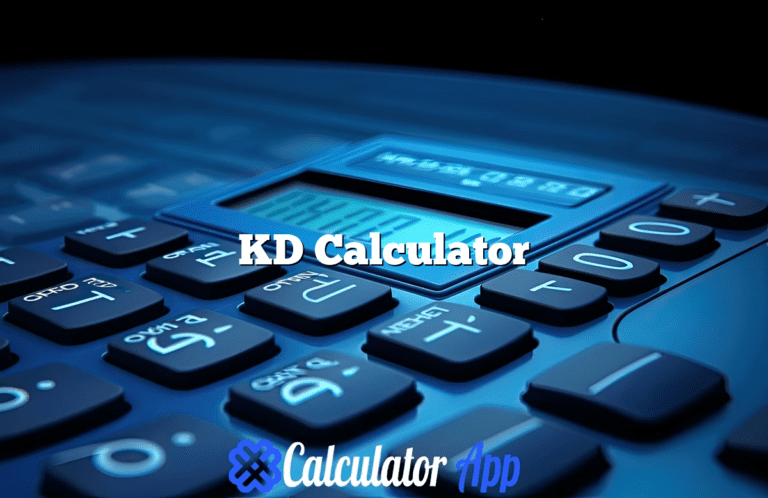Advanced Horsepower Calculator
The Ultimate Guide to Horsepower Calculators: Everything You Need to Know
Horsepower is a familiar term often associated with the power of car engines, power tools, and various machines. Despite its frequent use, many people aren’t fully aware of what horsepower truly represents or how it’s calculated. If you’ve ever been curious about understanding the power output of a car engine, an electrical generator, or a piece of industrial equipment, then a horsepower calculator is a must-have tool.
In this article, we’ll explore what horsepower really means, the different types of horsepower, and why it’s important. We’ll also discuss various methods for calculating horsepower and provide insights into using an advanced horsepower calculator to make these calculations effortlessly.
What is Horsepower?
Horsepower is a unit of measurement that reflects power output. Created in the 18th century by engineer James Watt, this unit of power was originally designed to compare the output of steam engines to that of horses. Watt observed that horses could do a specific amount of work, measured in foot-pounds, over a minute. To make steam engines more relatable, he used these observations to quantify power in terms of horses, coining the term “horsepower.”
Today, horsepower is widely used to measure the power of engines in cars, boats, and airplanes, as well as in other machinery. It helps consumers, engineers, and mechanics evaluate and compare different machines based on their power output. In simple terms, horsepower can be thought of as the ability of a machine to perform work within a set time frame.
Different Types of Horsepower
There are several types of horsepower, each used for specific purposes or in particular industries. Understanding these distinctions is important when it comes to calculating horsepower accurately. Here are the most common types:
- Mechanical Horsepower: This is the original form of horsepower, defined as 33,000 foot-pounds of work per minute. In simpler terms, this equates to the power required to move 33,000 pounds a distance of one foot in one minute. It is equivalent to approximately 745.7 watts.
- Electrical Horsepower: Often used for electric motors, this unit is slightly different and is defined as exactly 746 watts. This type of horsepower calculation is valuable for machines that operate on electricity.
- Metric Horsepower: Mainly used in European countries, metric horsepower is based on the metric system. It is roughly equivalent to 735.5 watts and is commonly used to describe the power output of vehicles in countries where the metric system is dominant.
- Brake Horsepower (BHP): This is the measurement of an engine’s horsepower before any power loss from the gearbox, alternator, water pump, or other engine components. BHP is typically measured at the engine’s output shaft, and it gives a true indication of the engine’s power in an ideal state.
- Shaft Horsepower (SHP): Often used in marine and aviation applications, this unit measures the power transmitted through a shaft to a propeller or rotor. It’s calculated similarly to brake horsepower but may factor in additional losses due to the transmission system.
How to Calculate Horsepower
Horsepower can be calculated in various ways, depending on the information you have available and the type of equipment you’re dealing with. Here are the two most common methods: (See Also: Absolute Value Calculator)
Method 1: Using Torque and RPM
Torque is a measure of rotational force, and RPM, or revolutions per minute, is a measure of how fast an engine or motor is spinning. When you have both torque and RPM values, you can calculate horsepower using a specific formula.
Let’s break it down without the formula. If you know the torque in pound-feet and the RPM of an engine, you multiply these two numbers together. Afterward, you divide by a standard number, 5252, which helps convert the torque-RPM product into horsepower. This calculation is useful in automotive applications where torque and RPM are standard metrics.
For example:
- If an engine provides 250 pound-feet of torque and operates at 5000 RPM, then by multiplying 250 by 5000 and then dividing by 5252, you would get the horsepower output.
Method 2: Using Watts
Another way to calculate horsepower, especially for electrical motors, is to use the wattage. Since watts measure electrical power, this method converts that power into mechanical power (horsepower) by dividing by 746. This conversion factor works because one horsepower is equivalent to 746 watts.
For example: (See Also: Potential Energy Calculator)
- If an electric motor uses 15000 watts, dividing 15000 by 746 gives you the horsepower equivalent.
Why Use a Horsepower Calculator?
Calculating horsepower manually, especially when dealing with different units or complex systems, can be challenging. A horsepower calculator makes it easier by providing a quick, accurate, and user-friendly way to compute horsepower based on available information. Here are some reasons to consider using an online horsepower calculator:
- Accuracy: It minimizes human error and provides precise results, which is especially important for professional applications.
- Versatility: Calculators can work with different types of input data, such as torque, RPM, or watts, making them useful for various engines and machines.
- Time-Saving: By automating the process, you can save valuable time and avoid repetitive manual calculations.
- Instant Conversions: Advanced calculators offer automatic unit conversions, eliminating the need for separate tools to switch between horsepower, watts, or kilowatts.
- Visual Aids: Many calculators include graphical data representations, such as bar charts, so you can visually compare results.
Features of an Advanced Horsepower Calculator
An advanced horsepower calculator goes beyond simple calculations, offering additional features that make it more versatile and user-friendly. Here’s a look at some of these features:
- Preset Data: This feature allows you to get started quickly by providing sample data for torque, RPM, and watts. You can adjust the values as needed to see how different input values affect the output.
- Dynamic Calculation Options: With an advanced calculator, you can choose between calculating horsepower using torque and RPM or using watts, depending on the type of machine you’re evaluating.
- Visual Representation: Graphs, such as bar charts, can display the calculated horsepower and equivalent kilowatts. Visual aids provide an easy way to compare power outputs in different units.
- Real-Time Updates: The calculator can update its output instantly as you adjust input values, allowing you to experiment with various configurations and observe how they impact the power output.
- Unit Conversions: You don’t need to worry about unit conversions; an advanced calculator handles these automatically, providing results in both horsepower and kilowatts for better insight.
Practical Applications of Horsepower Calculations
Horsepower calculations are essential in various industries. Here are some practical applications:
- Automotive Industry: Horsepower is a key performance metric for cars and motorcycles. Higher horsepower often means better acceleration and higher top speeds. Engineers, car enthusiasts, and consumers all rely on horsepower ratings when assessing vehicle performance.
- Construction Equipment: Many machines, such as bulldozers, cranes, and excavators, are rated based on horsepower. By calculating the horsepower, operators can ensure these machines have sufficient power for demanding tasks.
- Industrial Machines: In industrial settings, machines such as conveyor belts, compressors, and generators are rated by their horsepower. This helps companies select the right machines for specific tasks and ensures operational efficiency.
- Household Appliances: While not as common, some household appliances, such as lawn mowers and vacuum cleaners, are rated in horsepower. Knowing this information can help consumers make informed purchasing decisions.
- Marine and Aviation: Horsepower calculations are vital in marine and aviation industries, where engine power determines the speed and efficiency of vessels and aircraft. Proper horsepower ratings also play a crucial role in maintaining safety standards.
How to Use an Advanced Horsepower Calculator
Using an advanced horsepower calculator is straightforward. Here’s a quick guide:
- Select Your Calculation Type: Decide whether you’re calculating horsepower from torque and RPM or from watts.
- Input Your Data: Enter your values for torque, RPM, or watts. If you’re unsure, preset data can help you get started.
- View Results: The calculator will show horsepower and equivalent kilowatt values. Many calculators will also display these results on a bar chart for easy visualization.
- Adjust and Experiment: Change input values as needed to see how different parameters affect the horsepower output.
Conclusion
A horsepower calculator is a valuable tool for anyone interested in understanding the power output of engines and machinery. Whether you’re working on a vehicle, an industrial project, or simply want to know more about household appliances, these calculators simplify the process of calculating and comparing horsepower.
With features such as preset data, real-time updates, and visual aids, an advanced horsepower calculator can save you time and provide accurate results. So next time you’re curious about how much power a machine or engine produces, try using a horsepower calculator to explore the possibilities.






